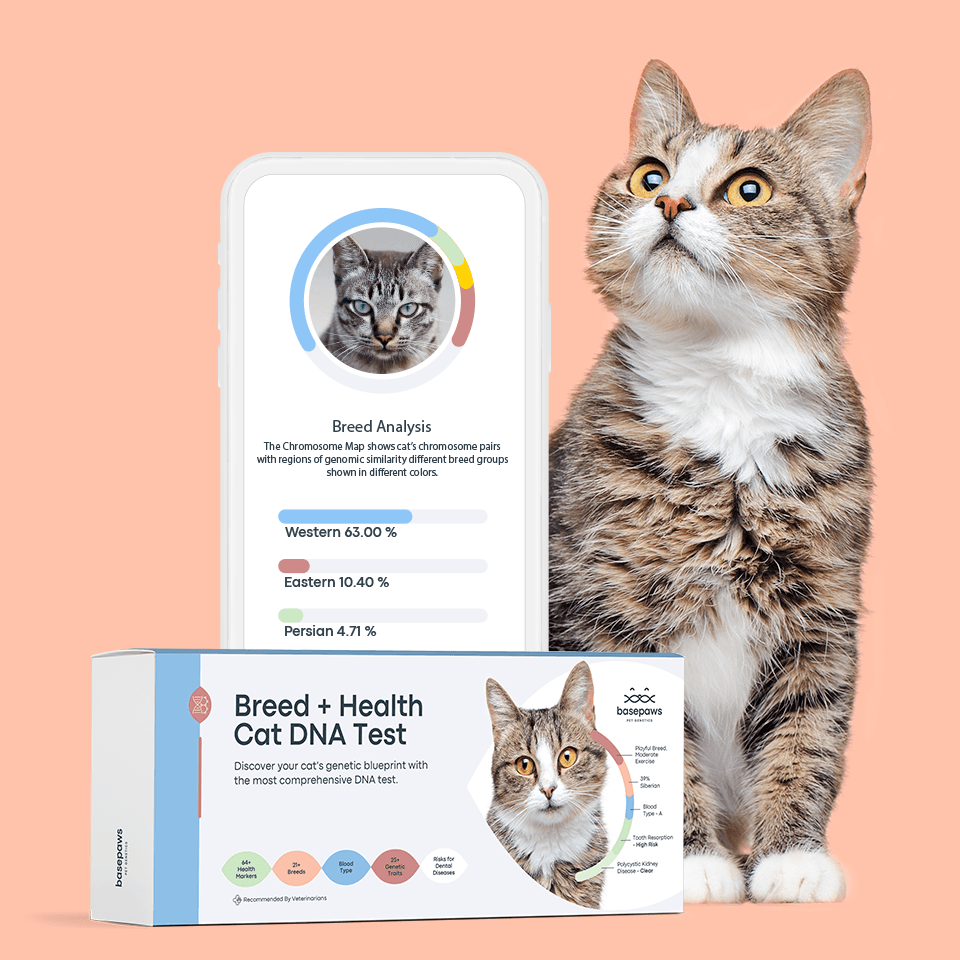Discover your cat's connection to this breed and 20 others


Discover your cat's connection to this breed and 20 others



Originally called the "stubbin" cat, the affectionate, friendly, and inquisitive Manx cat is a loyal companion who makes for a wonderful family pet. Known to be a vocal kitty, the Manx loves to tell you all about their day. You will often find this "mini race care driver" zooming around looking for fun, in between seeking playtime and lots of cuddles with you.
The Manx is a medium-sized cat with a signature feature: no tail, which earned them the nickname "Stumpy" or "Rumpy". However, Manx's born with slightly more tail than others are often referred to as "Rumpy Riser". The Manx is shorthaired, but there is a longhaired version known as the Cymric. Cat Fanciers' Association (CFA) states that the longhair gene was introduced during the rule of the Vikings, when the Norwegian Forest Cats that hitched rides on Viking ships to the Isle of Mann freely bred with native Manx cats. The Manx sports all coat colors and patterns, and their frame is heavy-boned and compact with powerful hind legs. They typically have long lifespans of 16+ years.
The Manx cat originated on the Isle of Man, a self-governing British Crown Dependency off the coast of northern England in the Irish Sea. Considered one of the oldest cat breeds, the Manx is associated with lore of old, including stories of Noah's Ark. It is said that a sweet Manx cat napping outside of the ark woke as the door was closing, making it inside just in the nick of time but unfortunately losing its tail. Other stories tell of the Manx's prowess in rodent hunting, and that they made good shipmates and lived on trading ships that sailed from Phoenicia to Japan. The word 'stubbin' was found in writings around 1750, and a the first picture of a Manx was displayed in a painting from 1810. Cat fanciers' records from the 1800s also hold records of the Manx cat.
The highly affectionate, sweet, and always on the go Manx is sure to capture your heart. They enjoy the company of children, other pets, and adults in equal measure and are very loyal. Manx are often water lovers, and known to follow their humans to the bathroom where they may play at the sink faucet or hang out behind shower curtains when the water is on. The Manx is also known as a highly intelligent and athletic cat, and they love to jump with their incredibly powerful hind legs. Manx are incredibly fun cats to have around and will keep you and your family endlessly entertained!
While the Manx is often considered a healthy breed, the genetics behind their short tail is associated with Max syndrome, which is a congenital spinal abnormality that can cause incontinence, constipation, and weakness or paralysis of the hind legs. The Manx can also suffer from skeletal malformations that affect their gait, which can lead to arthritis as they age. Their coats do require regular grooming, at least once or twice per week. Longhaired Manx do shed more, so daily brushing helps prevent mats and tangles.
Incredible hunters. Manx have a high prey drive and are well-known for their hunting prowess. They'll capture insects inside or outside the house, and you'll never have a mouse problem. However, its best to keep prey-type pets, such as birds and hamsters, securely out of reach of your Manx.
Little locksmiths. The Manx puts its agile mind to work to open drawers, jiggle handles and latches, and otherwise get into mischief exploring things behind closed doors. Keep this in mind as you're storing those valuables!
Cat of Mann and fun language facts. Manx is also a Gaelic language, said to be closely related to Irish and Scottish Gaelic. "Kayt Manninagh" in Manx translates to "cat of Man(n)", a nod to the breed's long history on the Isle of Man.
The International Cat Association (TICA) “Manx At A Glance ”
Cat Fanciers' Association "About the Manx"
Recommended by top vets with decades of experience
21 breeds
64 genetic health markers
50 genetic trait markers
